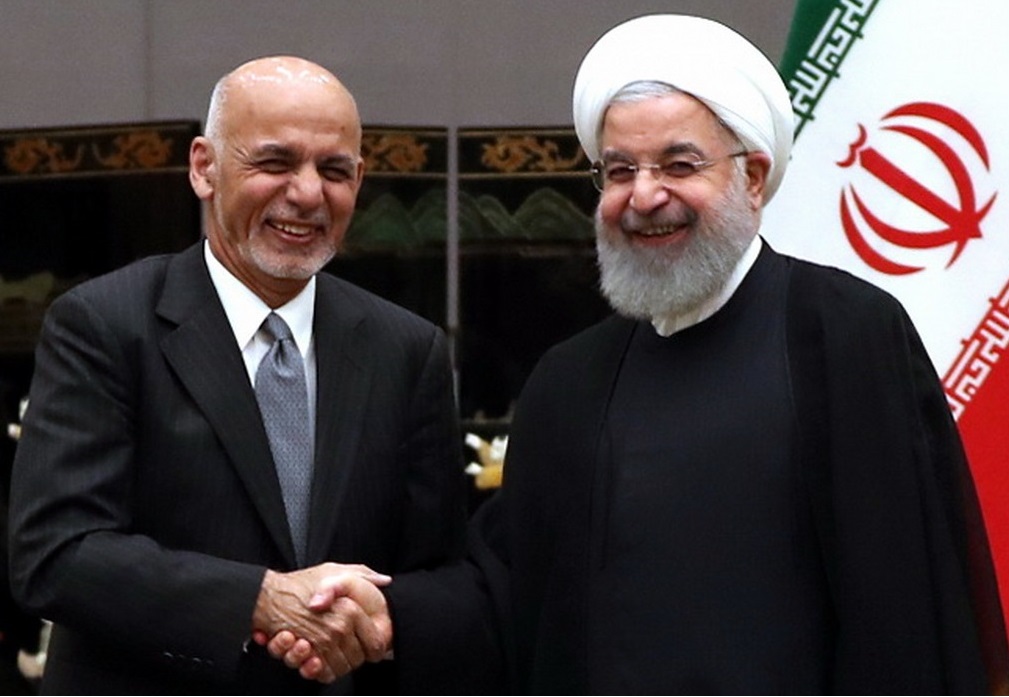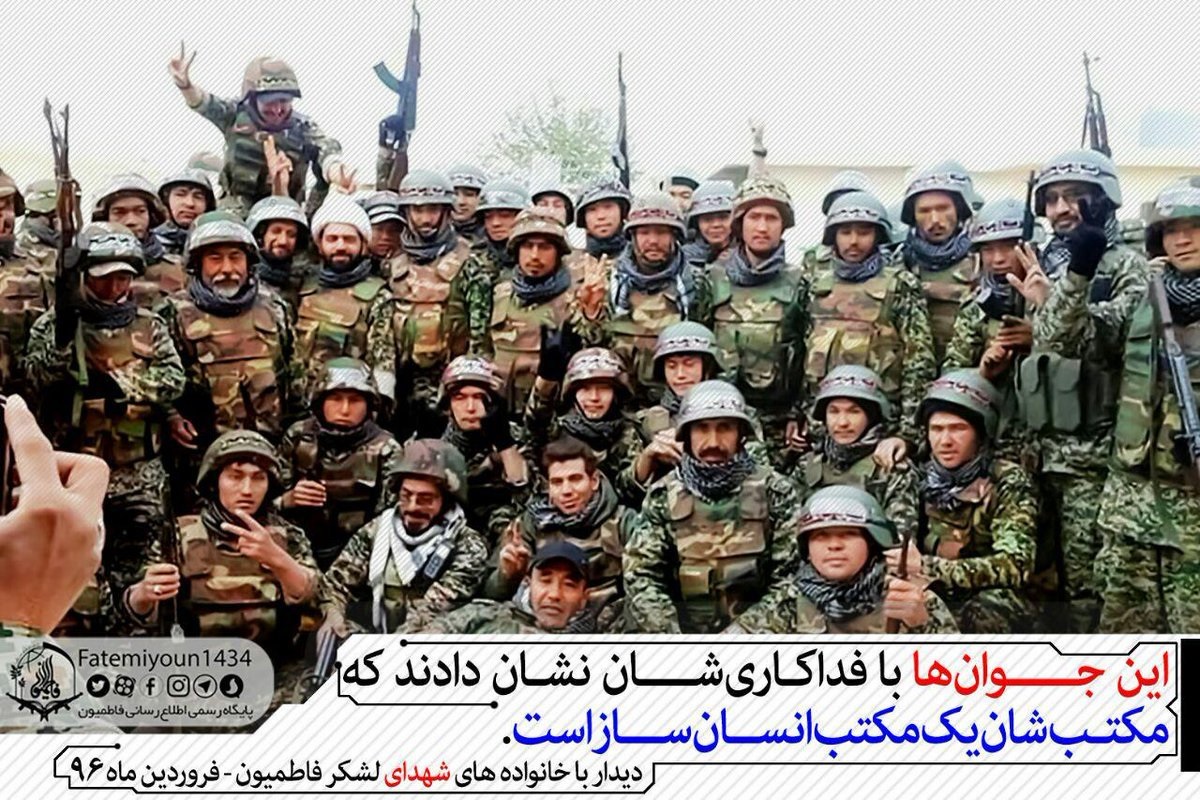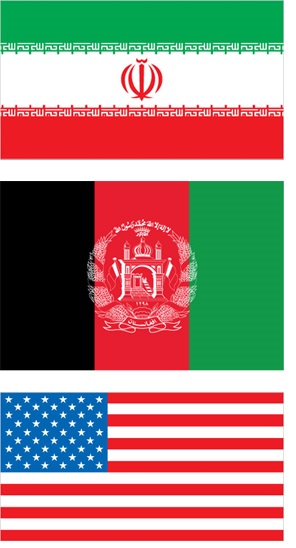As neighbors with a 585-mile frontier, Iran and Afghanistan have connections spanning centuries. Relations were formally established in 1935 when both countries were ruled by monarchies. Since 1979—the year of Iran’s revolution and the Soviet invasion of Afghanistan—relations between Tehran and Kabul have gyrated.
In 2018, what is the state of relations between Afghanistan’s Sunni-led government and Iran’s Shiite theocracy? On what issues do they collaborate? On what issues are they divided?

Today, ties are positive overall, although they face undercurrents of friction. Since 1979, the biggest source of tension has been Iran’s interference through proxies in Afghanistan. Iran is predominantly Shiite while Afghanistan’s population is at least 85 percent Sunni and about 10 percent Shiite. Initially, the sectarian divide was not a large source of tension. At times, Tehran allied with Sunni Tajiks and Pashtuns.
Since the 1990s, however, Iran has viewed Afghanistan as a haven for Sunni extremists. The Taliban, which seized power from Afghan warlords in the mid-1990s, ruled until the U.S. and NATO intervention in 2001. After its ouster, the Taliban returned to guerilla warfare. Since 2011, it has been the nemesis of the U.S.-supported government. In 2015, ISIS, another Sunni extremist movement, also gained a foothold in Afghanistan.

For decades, Tehran has supported the Hazara, a Shiite minority and the third largest ethnic group in Afghanistan. In the 1990s, the Taliban government repressed the Hazara—excluding them politically, isolating them economically, and killing more than 1,000—during the civil war that erupted after the 1989 Soviet withdrawal. Tensions heightened in 1998, when the Taliban killed nine Iranian diplomats working at a consulate in northern Mazar-i-Sharif. After the 9/11 attacks and the U.S. invasion of Afghanistan, Iran worked closely with the United States and regional powers to establish a new Afghan government free of the Taliban.
Iran’s relationship with the Taliban shifted, however, as U.S. and NATO forces stayed in Afghanistan. Tehran viewed the Taliban as a useful tool to counter U.S. influence on its borders. It provided Taliban forces with enough military equipment to pressure the United States but not enough to generate American military retaliation. In 2016, the Taliban chief, Mullah Akhtar Mansour, was killed in a U.S. drone strike as he returned from a secret visit in Iran to his sanctuary in Pakistan. By 2017, Russia reportedly used Iran to funnel weapons to the Taliban.
Iran has also been uneasy about the Afghan government’s lack of control beyond Kabul. Relations with the Taliban hedged against the future. Iran’s fear of ISIS also far exceeds its alarm over the Taliban, which it views as one of the few forces capable of countering the younger Sunni extremist movement.
What are the biggest security issues between the two countries?
Narcotics trafficking is a major problem on the border. Afghanistan produces some 90 percent of the world’s illicit opium, much of which is trafficked through Iran to the rest of the world. Tehran blames Kabul for failing to curb opium production and prevent cross-border drug smuggling. Iran claims to have lost nearly 4,000 security forces fighting drug traffickers between 1979 and 2009. Narcotics are also a growing domestic problem for Iran too. As of mid-2017, 2.8 million Iranians were also regular drug users, primarily of opium, as of mid-2017, according to a survey.
The status of Afghan refugees in Iran—some of them dating back to the exodus after the 1989 Soviet invasion of Afghanistan—is another strain on relations. Iran hosts between 1 million and 3 million refugees (only 1 million are documented), second only to Pakistan. Many of the refugees today were born in Iran, but they are not eligible for citizenship and are denied basic services. Education in Iranian government schools was unavailable for many refugee children until 2015.
Afghans often can find only low-paying or dangerous jobs in construction or agriculture. Thousands have also ended up fighting in the Iran-mobilized Fatemiyoun Division in Syria. That unit of Shiite Afghans—estimated to number between 8,000 and 14,000 fighters—was formed in 2014 to help Iran prop up the Assad regime, Iran’s closest ally in the Arab world. Iran also allows non-refugees to work in Iran, but it uses temporary work visas as leverage over Kabul. Unemployment in Afghanistan is about 27 percent, so shutting off opportunities for work in Iran puts pressure on the Kabul government.

Water is a third border issue. Water from Afghanistan’s mountains flows into Iran. President Ashraf Ghani has announced several dam projects that would interrupt waterflow into Iran. As of mid-2018, however, work had begun on only one. The project will help the Afghan economy and provide some political leverage over Iran in an otherwise one-sided relationship.
What is the economic relationship between the two neighbors?
The trade relationship is largely one-way. By 2018, Iran had overtaken Pakistan as Afghanistan’s biggest trading partner. Iran exported goods worth nearly $2 billion to Afghanistan between March 2017 and March 2018. From Iran, Afghanistan imports goods ranging from construction materials and chocolate to electricity. In turn, Afghanistan exports fruit, nuts, carpets, cotton, wool, and animal hides to Iran.
Herat, in western Afghanistan, is an important transit point for goods. Chabahar port in southeastern Iran, which has received significant investment from India, is also enabling Indian exports to Iran and landlocked Afghanistan to bypass land routes via Pakistan.
How is Iran building influence in Afghanistan? Where are Tehran’s efforts most visible? What countries is Iran competing with?
Iran wants stability next door, so it has not tried to fundamentally disrupt Afghan politics. It primarily builds influence by investing in proxies, ranging from Hazara mujahideen politicians and warlords to Northern Alliance groups. Cooperation with the Taliban may be part of this multi-pronged strategy. To curry favor, Tehran has also built schools and supported media outlets.
Pakistan is Iran’s main competition for influence in Afghanistan, followed by the United States. Pakistan has invested largely in Sunni proxies.
To what extent do U.S. and Iranian interests overlap in Afghanistan?
 Their interests overlap to a surprising degree. Iran was pivotal in the U.S.-orchestrated process that created a post-Taliban government in 2001. In his memoir, the U.S. special envoy to Afghanistan, James Dobbins, chronicled his interactions with the chief Iranian negotiator, Mohammad Javad Zarif (who became foreign minister in 2013). Zarif noted that the draft agreement seemed to be missing a few things, Dobbins wrote. “The text makes no mention of democratic elections,” Zarif told him. “Don’t you think that the new Afghan regime should be committed to hold democratic elections?” Zarif also played a pivotal role in convincing the opposition Northern Alliance to accept the U.S.-backed candidate, Hamid Karzai, as president.
Their interests overlap to a surprising degree. Iran was pivotal in the U.S.-orchestrated process that created a post-Taliban government in 2001. In his memoir, the U.S. special envoy to Afghanistan, James Dobbins, chronicled his interactions with the chief Iranian negotiator, Mohammad Javad Zarif (who became foreign minister in 2013). Zarif noted that the draft agreement seemed to be missing a few things, Dobbins wrote. “The text makes no mention of democratic elections,” Zarif told him. “Don’t you think that the new Afghan regime should be committed to hold democratic elections?” Zarif also played a pivotal role in convincing the opposition Northern Alliance to accept the U.S.-backed candidate, Hamid Karzai, as president.
That was the high point of U.S.-Iranian cooperation. A month later, President George W. Bush called Iran part of an “axis of evil” that included Iraq and North Korea. Yet the two countries have still shared an interest in stabilizing Afghanistan and eliminating safe havens for ISIS and other extremist groups.
U.S. and Iranian interests diverge deeply, however, on the continued U.S. military presence in Afghanistan. Iran has been increasingly suspicious that the United States intends to maintain a troop presence there for potential use against Iran.
Scott Worden is director of Afghanistan and Central Asia Programs at the U.S. Institute of Peace.
